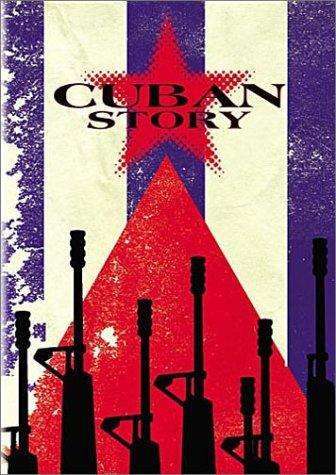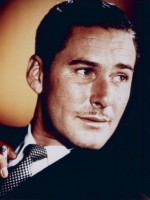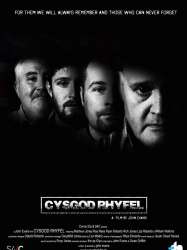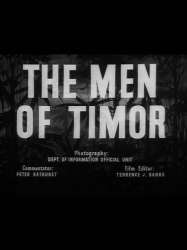The Truth About Fidel Castro Revolution is a american film of genre Documentary with Errol Flynn
The Truth About Fidel Castro Revolution (1959)

If you like this film, let us know!
Cuban Story: The Truth about Fidel Castro Revolution is a 1959 film documentary narrated by Errol Flynn, and the last known performance work of his career.
It was one of two films Flynn made about the Cuban Revolution during the early period when Castro was publicly denying his communist allegiance, the other being the drama-documentary Cuban Rebel Girls (1959).
Actors

Errol Flynn
(Himself - Reporter)
Comments
Leave comment :
Suggestions of similar film to The Truth About Fidel Castro Revolution
There are 59 films with the same actors, 8965 with the same cinematographic genres, 13460 films with the same themes (including 716 films with the same 3 themes than The Truth About Fidel Castro Revolution), to have finally 70 suggestions of similar films.If you liked The Truth About Fidel Castro Revolution, you will probably like those similar films :

In the Wake of the Bounty (1933)
, 1h6Directed by Charles Chauvel
Origin Australie
Genres Drama, Documentary, Action
Themes Seafaring films, Transport films
Actors Errol Flynn, Charles Chauvel, Elsa Chauvel
Rating47%





Chauvel's film uses introductory enacted scenes showing the mutiny, followed by documentary footage, anthropological style, of the mutineers' descendants on Pitcairn Island. Chauvel also used footage of Polynesian women dancers; and film of an underwater shipwreck, filmed with a glass bottomed boat, which he believed was the Bounty but was probably not. This was Chauvel's first 'talkie' and he had clearly at this stage not yet learned to direct actors: the dialogue is very stiff and amateurish. The use of long sections of documentary footage with a voice over, combined with acted scenes, is similar to the hybrid silent and talking pictures that were produced during the transition to sound. It also represents the combination of interests of the director, and he returned to documentary toward the end of his career with the BBC television series Walkabout. Despite the poorly written dialogue, the documentary sections retain their excellence. A return to enactments at the end of the film, with one scripted modern scene in which a child suffers because of the lack of regular ship visits which could have taken the child to hospital, probably sought to make the film a useful voice for the Pitcairn Island community, who had been generous with their participation.

Cysgod Rhyfel (2014)
Origin United-kingdom
Genres Documentary
Themes Medical-themed films, Seafaring films, Films about terrorism, Transport films, Documentary films about war, Documentary films about historical events, Documentary films about health care, Films about psychiatry, Films about disabilities, Political films
After active service in Northern Ireland, the Falklands, Iraq and Afghanistan four veterans openly discuss their experiences of conflict and the psychological effects of war on their lives beyond the battlefield and how they live life after their wars and once they return home. The film uses a mixture of talking head testimony, archive and highly stylised dramatic sequences.

Kokoda Front Line! (1942)
, 9minutesDirected by Damien Parer, Ken G. Hall
Genres War, Documentary
Themes Seafaring films, Transport films, Documentary films about war, Documentary films about historical events, Political films, Documentary films about World War II
Rating57%






The Men of Timor (1943)
, 9minutesDirected by Damien Parer
Genres Documentary
Themes Seafaring films, Transport films, Documentary films about war, Documentary films about historical events, Political films, Documentary films about World War II
The film opens with a map of the area showing Timors in relation to the north Australian coast, and briefly explains the circumstances of the left behind Australian troops who did not surrender but carried on a guerrilla war against the Japanese. After some very difficult forays behind enemy lines to capture equipment for radio, they manage to contact Darwin. Wary of a possible Japanese trick they ask the men what the first name of a wife of a particular sergeant was. When the correct answer, Joan, is returned, the Australian military starts to airlift supplies to the guerrillas and their Timorese allies.

Looking for Iara (2013)
Origin Bresil
Genres Documentary
Themes Seafaring films, Transport films, Documentary films about law, Documentary films about war, Documentary films about historical events, Documentary films about politics, Political films, Films about Latin American military dictatorships
Rating79%





 , 49minutes
, 49minutesGenres Documentary
Themes Seafaring films, Transport films, Documentary films about war, Documentary films about historical events, Political films
The movie begins by introducing Sri Lanka as a paradise, viewed by many as the land of Buddha. The white sand beaches in the Sinhalese south are shown, as well as tranquil Buddhist temples.

December 7th (1943)
, 34minutesDirected by Gregg Toland, John Ford
Origin USA
Genres War, Documentary, Action, Historical
Themes Seafaring films, Transport films, Aviation films, Documentary films about war, Documentary films about historical events, Documentary films about technology, Political films, Documentary films about World War II, United States Armed Forces in films
Actors Walter Huston, Dana Andrews, Harry Davenport, George O'Brien, Paul Hurst, James Kevin McGuinness
Rating60%





Jugée trop « compatissante » envers les japonais, et coupée au montage par l’État-Major américain, cette reconstitution hautement réaliste reçut néanmoins l’Oscar® du meilleur documentaire en 1943.

Twenty Years Later (1985)
, 1h59Directed by Eduardo Coutinho
Origin Bresil
Genres Documentary, Historical
Themes Seafaring films, Transport films, Documentary films about law, Documentary films about politics, Political films, Films about Latin American military dictatorships
Actors Eduardo Coutinho
Rating82%






Hiroshima (1995)
, 3h10Directed by Roger Spottiswoode, Koreyoshi Kurahara, Hideo Sekigawa
Origin Canada
Genres Drama, Documentary
Themes Environmental films, Seafaring films, Transport films, Aviation films, Documentary films about environmental issues, Documentary films about war, Documentary films about historical events, Documentary films about nuclear technology, Documentary films about technology, Political films, Documentary films about World War II
Actors Eiji Okada, Kenneth Welsh, Ken Jenkins, Yumeji Tsukioka, Tatsuo Matsumura, Wesley Addy
Rating77%





The film opens in April 1945 with the death of Franklin Roosevelt and the succession of Harry Truman to the presidency. In Europe, the Germans are close to surrender, but in the Pacific the bloody battle for Okinawa is still underway and an invasion of the Japanese home islands is not foreseen until the autumn. American battle casualties have almost reached 900,000, with Japanese casualties at 1.1 million, and some 8 million Asian civilians have died in the war that began with Japan's invasion of Manchuria in 1931.
 Connection
Connection
